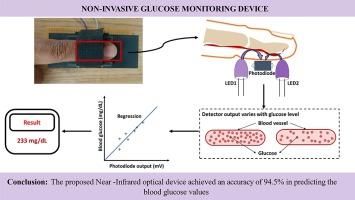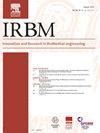Potential of Near-Infrared Optical Techniques for Non-invasive Blood Glucose Measurement: A Pilot Study
IF 4.2
4区 医学
Q1 ENGINEERING, BIOMEDICAL
引用次数: 0
Abstract
Background
Diabetes mellitus manifested by escalated blood glucose, demands periodic or continuous glucose monitoring in the pursuit of improved control, optimal management, and appropriate medication. The existing state-of-the-art for blood glucose estimation are invasive methodologies necessitating the acquisition of blood sample through either a finger-stick or venipuncture.
Methods
We propose a dual Near-infrared wavelength integrated in a 3D printed enclosure as the optical prototype for non-invasive glucose estimation. We acquired data from both diabetic and healthy subjects with the developed system and subsequently validated the system.
Results
The system demonstrated commendable clinical accuracy, as evidenced by the alignment of data pairs representing actual blood glucose levels and blood glucose levels predicted by our optical system within the A+B zones of the Parkes error grid and zones of no-risk and lower risk as defined by the surveillance error grid. We achieved compliant pairs percentage of 95.6%, which satisfies the accuracy requirements of the blood glucose monitoring surveillance study. The mean absolute percentage error attained with the proposed device (5.99%) was significant in predicting the blood glucose.
Conclusion
We successfully deployed the NIR wavelengths functionality as the promising approach for glucose monitoring, offering new possibilities for improved medical interventions.

近红外光学技术在无创血糖测量中的潜力:试点研究
背景糖尿病表现为血糖升高,需要定期或连续监测血糖,以改善控制、优化管理和适当用药。我们提出了一种集成在 3D 打印外壳中的双近红外波长,作为无创血糖估测的光学原型。结果该系统表现出了值得称赞的临床准确性,这体现在代表实际血糖水平的数据对和我们的光学系统预测的血糖水平对准了 Parkes 误差网格的 A+B 区以及监视误差网格定义的无风险区和低风险区。我们达到了 95.6% 的符合对比例,满足了血糖监测监控研究的准确性要求。结论我们成功地将近红外波长功能作为血糖监测的有效方法,为改善医疗干预提供了新的可能性。
本文章由计算机程序翻译,如有差异,请以英文原文为准。
求助全文
约1分钟内获得全文
求助全文
来源期刊

Irbm
ENGINEERING, BIOMEDICAL-
CiteScore
10.30
自引率
4.20%
发文量
81
审稿时长
57 days
期刊介绍:
IRBM is the journal of the AGBM (Alliance for engineering in Biology an Medicine / Alliance pour le génie biologique et médical) and the SFGBM (BioMedical Engineering French Society / Société française de génie biologique médical) and the AFIB (French Association of Biomedical Engineers / Association française des ingénieurs biomédicaux).
As a vehicle of information and knowledge in the field of biomedical technologies, IRBM is devoted to fundamental as well as clinical research. Biomedical engineering and use of new technologies are the cornerstones of IRBM, providing authors and users with the latest information. Its six issues per year propose reviews (state-of-the-art and current knowledge), original articles directed at fundamental research and articles focusing on biomedical engineering. All articles are submitted to peer reviewers acting as guarantors for IRBM''s scientific and medical content. The field covered by IRBM includes all the discipline of Biomedical engineering. Thereby, the type of papers published include those that cover the technological and methodological development in:
-Physiological and Biological Signal processing (EEG, MEG, ECG…)-
Medical Image processing-
Biomechanics-
Biomaterials-
Medical Physics-
Biophysics-
Physiological and Biological Sensors-
Information technologies in healthcare-
Disability research-
Computational physiology-
…
 求助内容:
求助内容: 应助结果提醒方式:
应助结果提醒方式:


